Government IT Directors and CIOs face an unprecedented challenge: balancing the transformative potential of artificial intelligence with the critical need to protect sensitive government data and maintain public trust. This comprehensive guide addresses the unique concerns of federal, state, and local government technology leaders who understand AI’s potential but are rightfully cautious about security risks and implementation complexities.
Understanding the Current Government AI Landscape
The federal government has made significant strides in AI adoption, with over 1,700 AI use cases reported across 37 agencies in 2024—more than doubling from the previous year. This rapid growth reflects both the technology’s potential and the urgency government leaders feel to modernize operations while maintaining security standards.
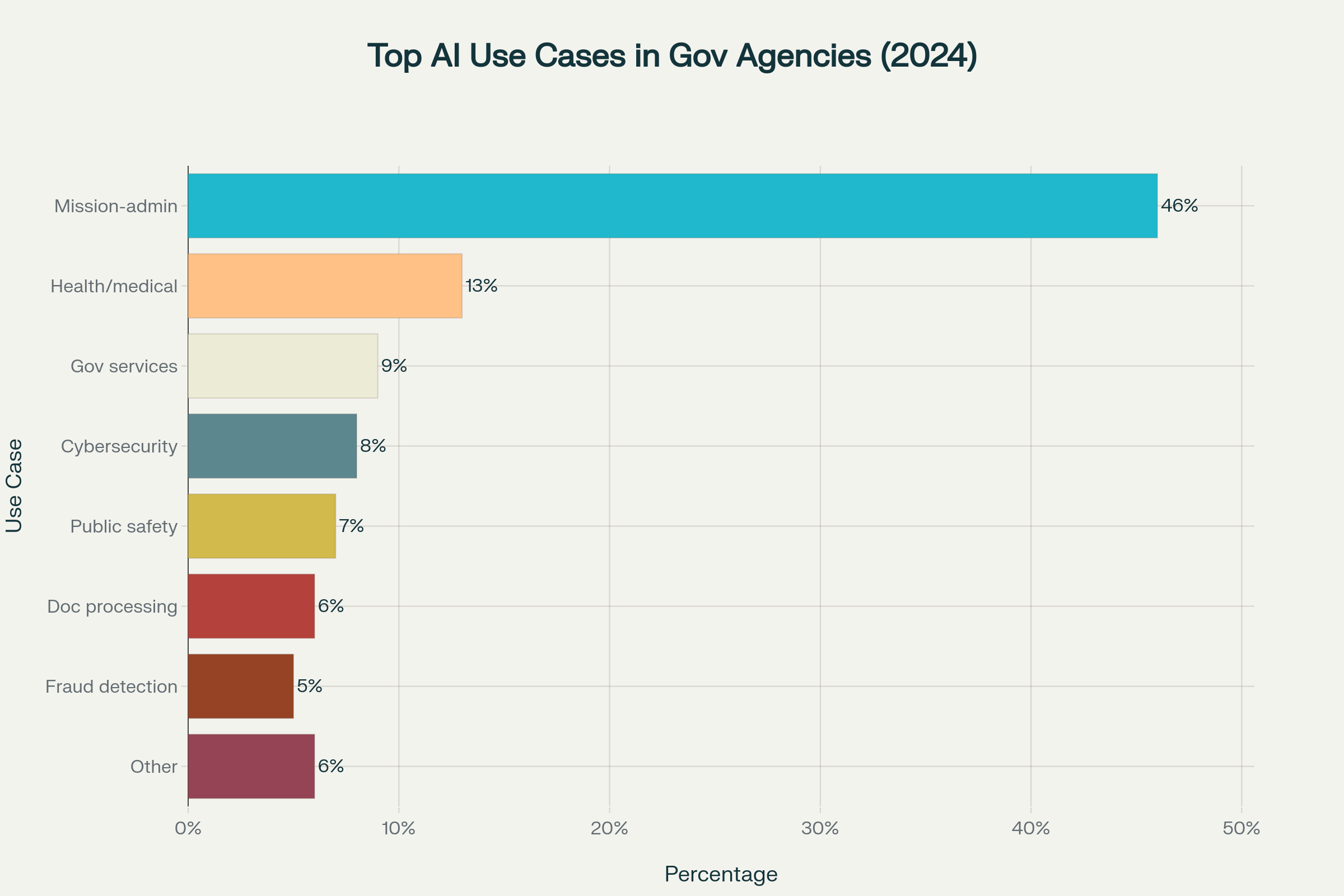
Government agencies are primarily using AI for administrative and IT functions, with health and medical applications following closely behind
As the data shows, government agencies are primarily leveraging AI for mission-enabling functions such as administrative tasks, IT operations, and cybersecurity—areas where the technology can deliver immediate operational benefits while minimizing risks to sensitive operations.
The Security-Innovation Dilemma
Your concerns about data leakage through open and insecure LLMs are well-founded and shared across government. Recent research indicates that 57% of IT leaders cite security and privacy threats as their primary concern about AI adoption, followed closely by 52% who worry about lack of trusted data.
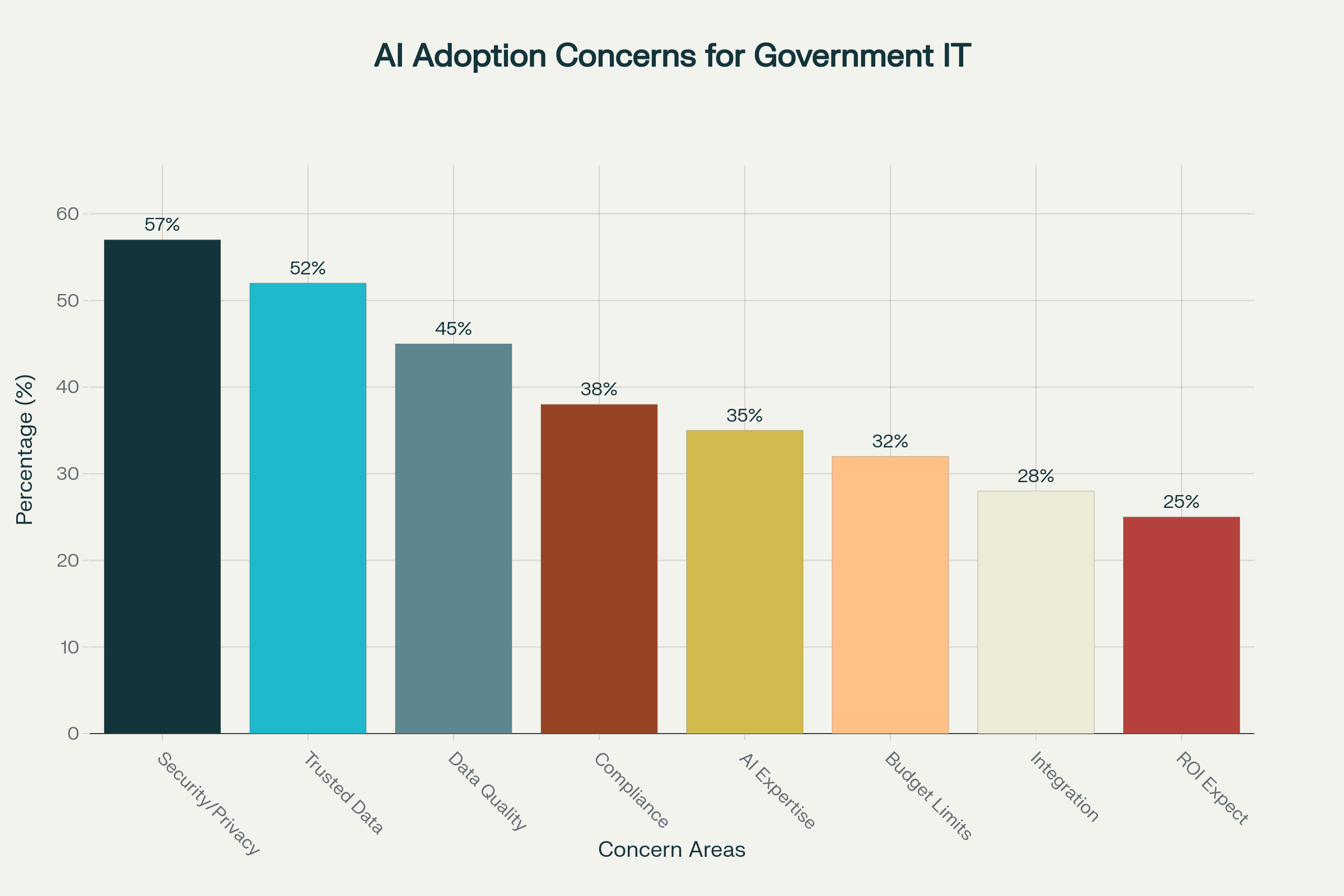
Security and data quality concerns dominate IT leaders’ worries about AI adoption in government agencies
This security-first mindset is appropriate given the sensitive nature of government data and the potential consequences of breaches. However, it’s important to understand that secure, government-approved AI solutions now exist that can address these concerns while delivering transformative benefits.
Federal AI Governance Framework: Your Security Foundation
NIST AI Risk Management Framework (AI RMF)
The National Institute of Standards and Technology has developed a comprehensive AI Risk Management Framework specifically designed to help government agencies manage AI risks throughout the entire lifecycle. The framework provides four core functions:
GOVERN: Establish organizational governance structures for AI risk management
MAP: Identify and assess AI risks in context
MEASURE: Quantify and monitor AI system performance and risks
MANAGE: Implement risk mitigation strategies and controls
Federal AI Mandates
The Biden Administration’s Executive Order 14110 and subsequent OMB guidance have established clear requirements for federal agencies:
-
- Chief AI Officers (CAIOs) must be designated within 60 days
- AI Governance Boards must be established within 90 days
- Risk assessments are required for all AI systems
- Minimum safeguards must be implemented by December 2024
However, recent policy changes under the Trump Administration have shifted focus toward removing barriers to AI innovation while maintaining security protections.
Department of Homeland Security AI Roadmap
DHS has released the most comprehensive AI roadmap of any federal agency, providing a blueprint for responsible AI implementation. The roadmap emphasizes three key areas:
-
- Leveraging AI to advance homeland security missions
-
- Promoting nationwide AI safety and security
-
- Leading through strong partnerships

Government officials and IT leaders in a formal meeting discussing AI strategy and policy in a boardroom setting
Microsoft-Centric AI Solutions for Government
Microsoft has emerged as a leader in providing secure, government-approved AI solutions that address your specific security concerns while delivering enterprise-grade capabilities.
Azure OpenAI Service for Government
Microsoft’s Azure OpenAI Service is now authorized for all U.S. Government data classification levels:
-
- FedRAMP High authorization for civilian agencies
-
- DoD Impact Level 4 and 5 authorization for defense workloads
-
- Top Secret cloud authorization for intelligence operations
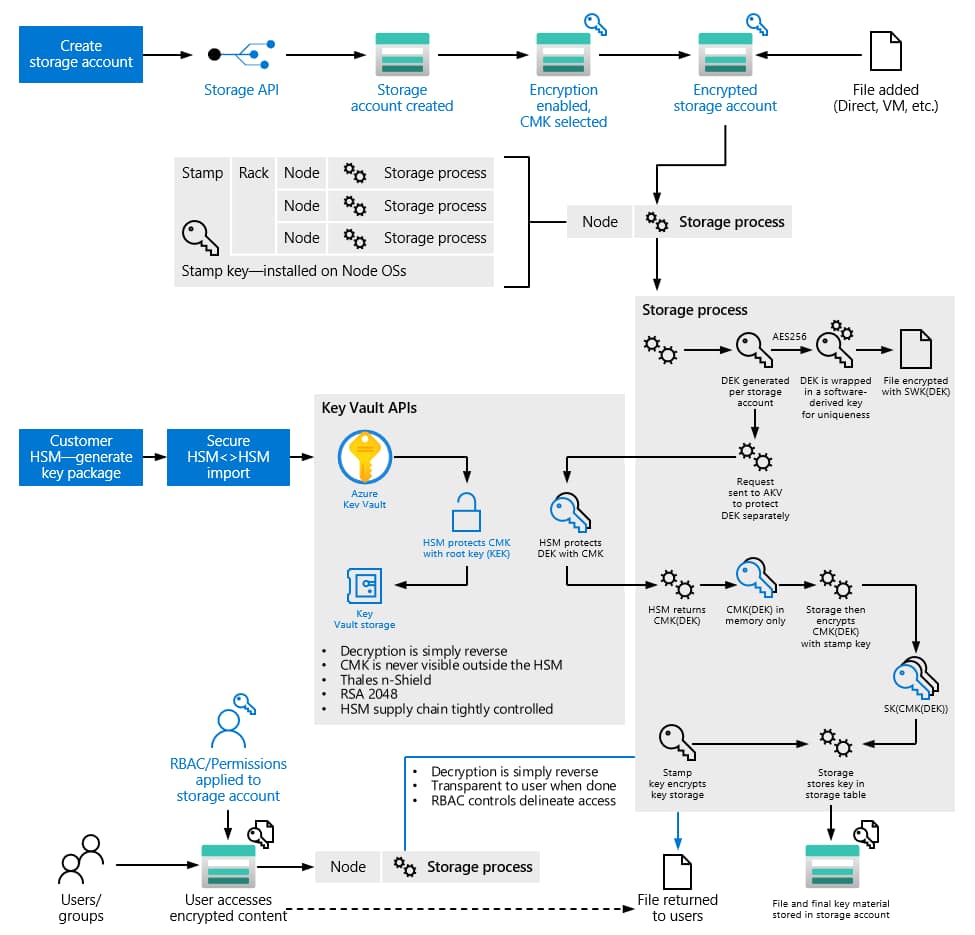
Detailed flowchart of Microsoft Azure’s secure storage account creation and encryption process using customer-managed keys and hardware security modules for government cloud security
This comprehensive authorization means your agency can leverage advanced AI capabilities including GPT-4o while maintaining strict security controls and compliance requirements.
Microsoft 365 Copilot for Government Community Cloud (GCC)
Microsoft 365 Copilot GCC became generally available in December 2024, providing AI-powered productivity tools specifically designed for government environments:
Phase 1 Features:
-
- Copilot in Word, Excel, PowerPoint
-
- Teams meeting recap and collaboration tools
-
- Outlook intelligent email management
-
- Business chat with organizational data integration
Security Features:
-
- Built on existing Microsoft 365 GCC security foundation
-
- Web grounding disabled by default
-
- Admin controls for policy management
-
- Microsoft Purview integration for data governance
Azure Government Cloud Infrastructure
Microsoft’s Azure Government cloud provides the secure foundation needed for AI workloads:
-
- Physically separated from commercial cloud infrastructure
-
- Screened personnel with security clearances
-
- US-based data storage and processing
-
- Compliance certifications including FedRAMP, CJIS, and HIPAA

Secure cloud computing infrastructure with a focus on data protection and cybersecurity for government IT environments
Real-World Government AI Success Stories
Federal Agency Innovations
Department of Health and Human Services: Using AI for fraud detection in healthcare programs, saving millions in improper payments.
Department of Veterans Affairs: Implementing predictive analytics to improve veteran care delivery and reduce wait times.
Social Security Administration: Deploying AI chatbots to handle routine citizen inquiries, freeing staff for complex cases.
Internal Revenue Service: Leveraging AI for tax fraud detection and automated document processing.
State and Local Implementations
California: Conducting comprehensive AI pilots in translation services, traffic analysis, and healthcare facility inspections.
Utah: Reporting that 60-70% of state employees are using AI tools, with leadership focusing on strategic governance.
Colorado: Using AI for process improvement in housing voucher programs, with employees reporting significant time savings.
Burlington, Ontario: Reduced building permit processing time from 15 weeks to 5-7 weeks using Microsoft Copilot Studio.

Government and industry leaders attend a Microsoft-hosted conference focused on artificial intelligence strategies and innovations
Addressing Your Core Concerns
Data Leakage Prevention
Your concerns about confidential information leakage through open LLMs are valid, but government-approved solutions provide multiple layers of protection:
Data Residency: All processing occurs within government-approved cloud environments with data remaining in the United States.
Access Controls: Role-based access controls ensure only authorized personnel can access AI systems.
Audit Trails: Complete logging and monitoring of all AI interactions for compliance and security review.
Encryption: End-to-end encryption using government-approved standards including AES-256.
Avoiding the “Left Behind” Trap
Government agencies that delay AI adoption risk significant competitive disadvantages:
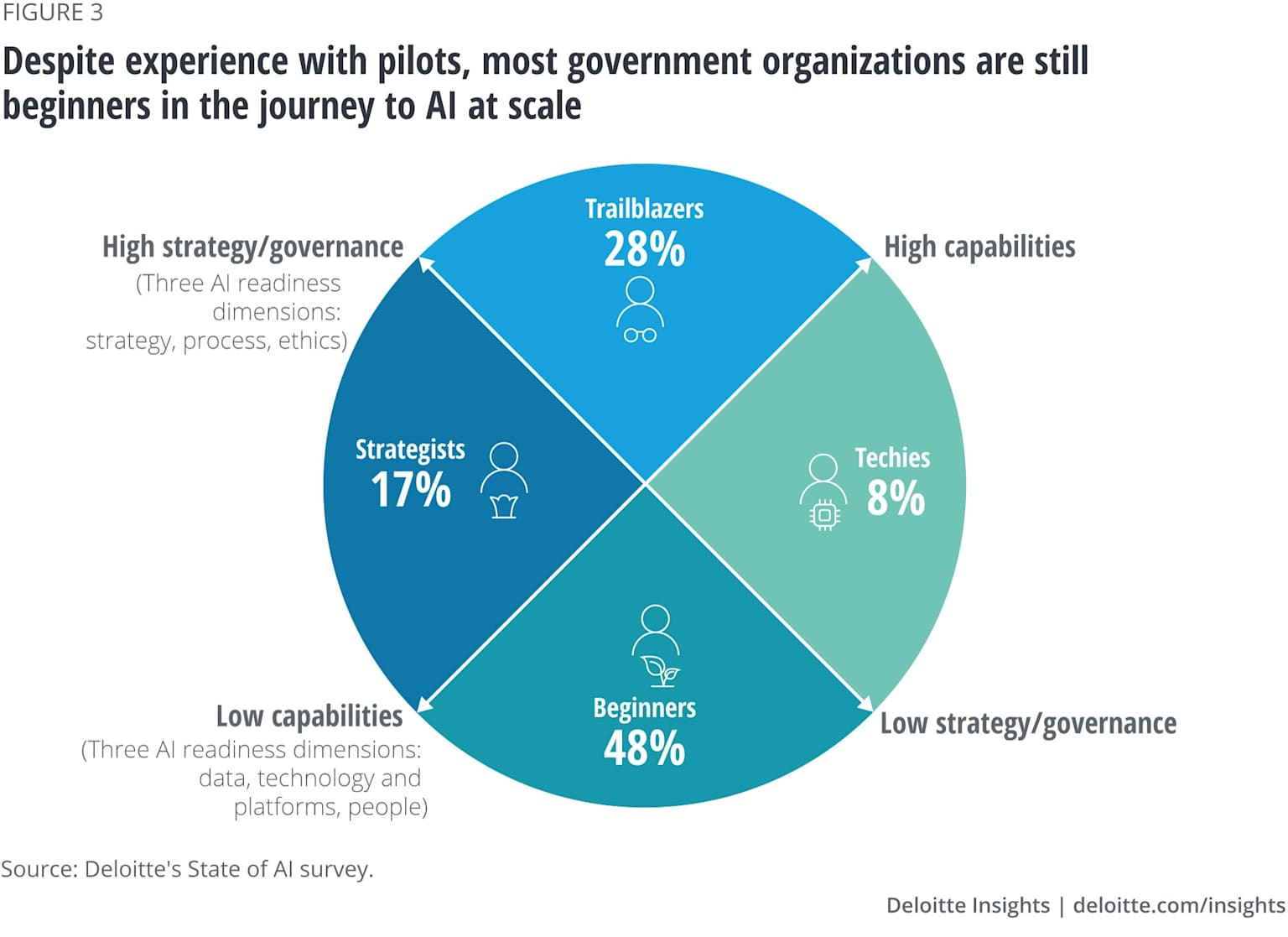
Government organizations’ AI readiness categorized by strategy/governance and capabilities, showing most are beginners in scaling AI
As shown in the data, 48% of government organizations are still beginners in AI adoption, creating an opportunity for early adopters to gain substantial operational advantages.
Benefits of Early Adoption:
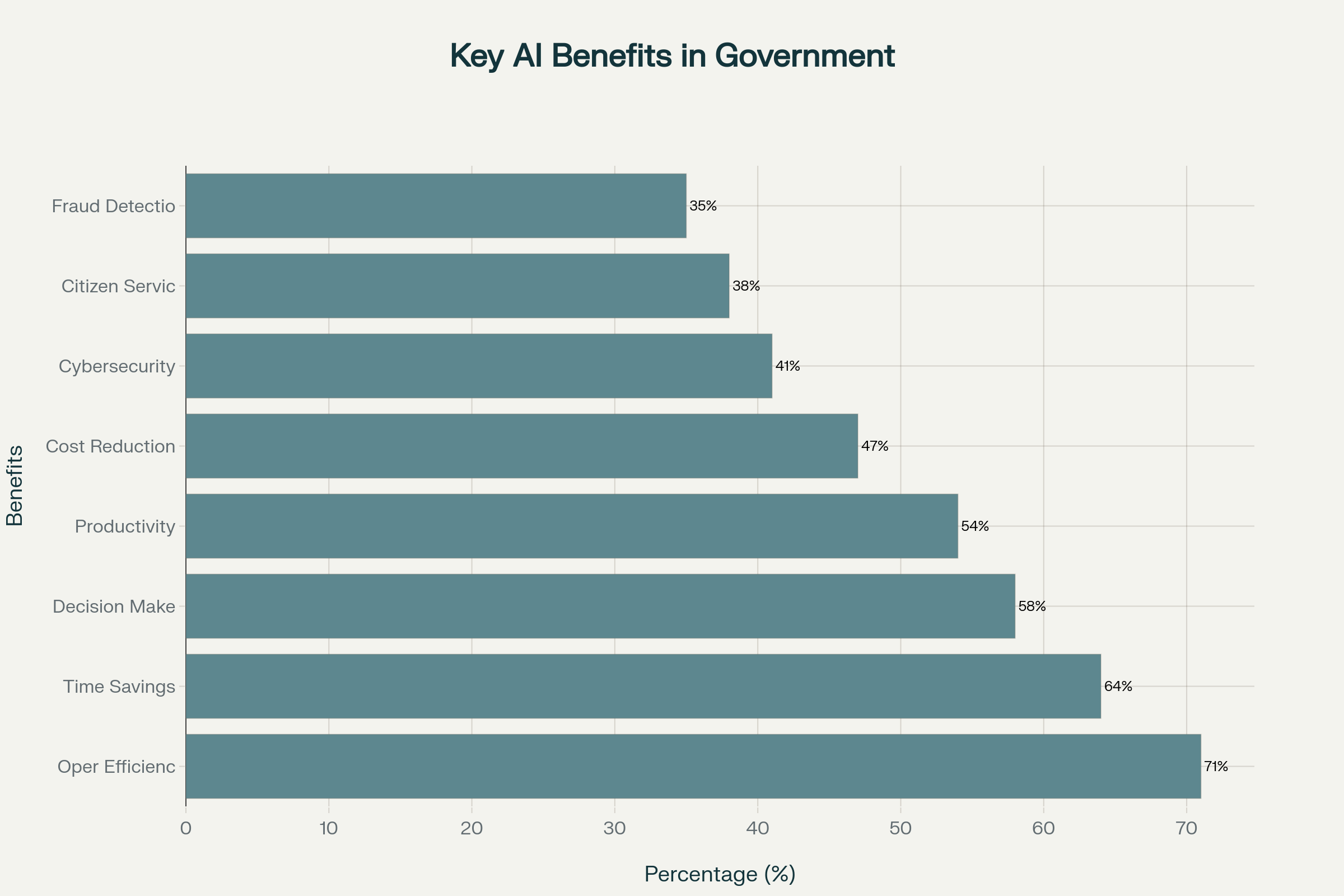
Government agencies report significant benefits from AI adoption, with operational efficiency and time savings leading the improvements
Government agencies report significant benefits from AI adoption, with 71% achieving enhanced operational efficiency and 64% experiencing improved time savings.
Best Practices for Getting Started Today
1. Establish AI Governance Structure
Immediate Actions:
-
- Designate a Chief AI Officer or AI lead
-
- Form an AI governance committee with representatives from IT, legal, security, and operations
-
- Develop initial AI use policies and procedures
Framework Selection: Consider adopting the NIST AI Risk Management Framework as your foundation.
2. Conduct AI Readiness Assessment
Technical Readiness:
-
- Evaluate current data infrastructure and quality
-
- Assess cybersecurity posture and compliance capabilities
-
- Review cloud migration status and security controls
Organizational Readiness:
-
- Survey current AI tool usage across departments
-
- Identify skill gaps and training needs
-
- Assess budget and resource allocation for AI initiatives
3. Start with Low-Risk, High-Impact Use Cases
Recommended Starting Points:
-
- Document Processing: Automate routine document analysis and data extraction
-
- Customer Service: Deploy AI chatbots for common citizen inquiries
-
- Cybersecurity: Implement AI-enhanced threat detection and response
-
- Administrative Tasks: Use AI for scheduling, report generation, and data analysis
4. Implement Pilot Programs
Pilot Program Structure:
-
- Duration: 90-120 days for initial pilots
-
- Scope: Single department or use case
-
- Metrics: Define clear success criteria and KPIs
-
- Security: Implement full security controls from day one
5. Partner with Trusted Vendors
Microsoft Partnership Benefits:
-
- Government-specific solutions designed for public sector needs
-
- Security certifications at all classification levels
-
- Dedicated support from government-focused teams
-
- Compliance assistance for regulatory requirements
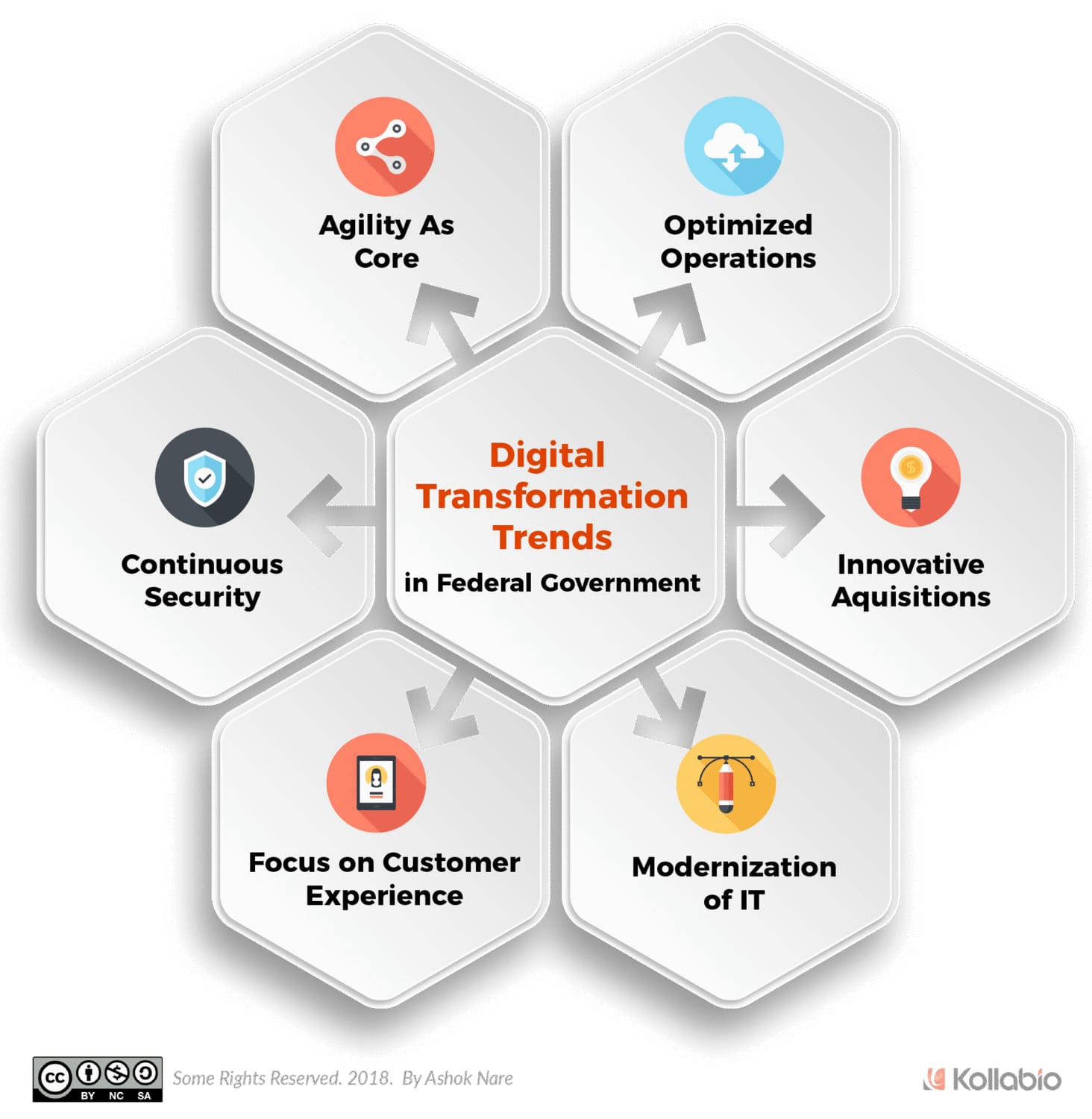
Top six digital transformation trends in federal government agencies highlighting agility, security, customer experience, IT modernization, acquisitions, and optimized operations
Implementation Timeline and Roadmap
Month 1-2: Foundation Building
-
- Establish AI governance structure
-
- Conduct readiness assessment
-
- Develop initial policies and procedures
-
- Begin staff training and awareness programs
Month 3-4: Pilot Launch
-
- Deploy first pilot program with Microsoft 365 Copilot GCC
-
- Implement security monitoring and compliance controls
-
- Gather user feedback and performance metrics
-
- Refine policies based on initial experience
Month 5-6: Expansion Planning
-
- Evaluate pilot results and lessons learned
-
- Identify additional use cases for expansion
-
- Develop budget requests for broader implementation
-
- Plan integration with existing systems and workflows
Month 7-12: Scaled Implementation
-
- Roll out successful pilots to additional departments
-
- Implement Azure OpenAI Service for advanced use cases
-
- Establish ongoing training and support programs
-
- Develop long-term AI strategy and roadmap
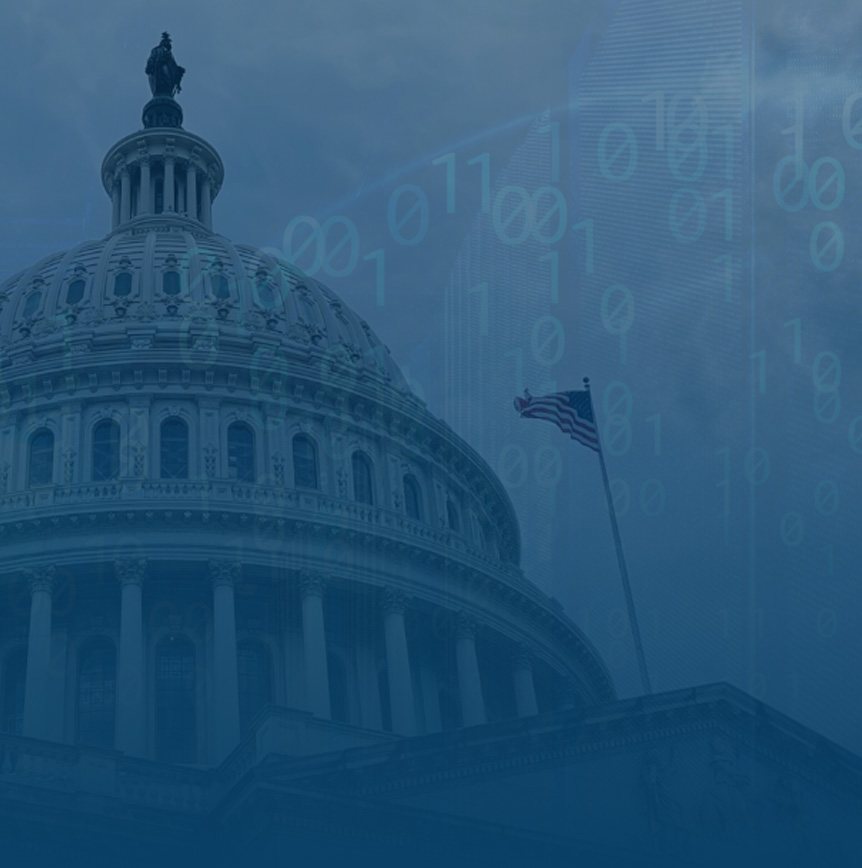
United States Capitol dome with digital binary overlay symbolizing AI and cybersecurity in government
Security and Compliance Considerations
Data Classification and Handling
Implement Strict Data Classification:
-
- Classify all data according to sensitivity levels
-
- Apply appropriate AI tools based on classification
-
- Ensure AI outputs maintain input classification levels
-
- Establish clear data retention and disposal policies
Continuous Monitoring and Auditing
Essential Monitoring Practices:
-
- Real-time monitoring of AI system performance
-
- Regular security assessments and penetration testing
-
- Compliance audits and reporting
-
- Incident response procedures for AI-related events
Privacy and Civil Rights Protection
Key Requirements:
-
- Implement bias detection and mitigation measures
-
- Ensure algorithmic transparency and explainability
-
- Protect personally identifiable information (PII)
-
- Maintain human oversight for high-stakes decisions
Strategic Recommendations
For IT Directors
-
- Focus on Infrastructure First: Ensure your cloud infrastructure and data governance are AI-ready before deploying advanced AI applications.
-
- Start with Microsoft 365 Copilot: This provides immediate productivity benefits while establishing your AI governance processes.
-
- Invest in Training: Allocate 20% of your AI budget to staff training and skill development.
-
- Measure Everything: Implement comprehensive metrics and monitoring from day one.
For Government CIOs
-
- Develop Agency-Wide AI Strategy: Create a comprehensive 3-year AI roadmap aligned with your agency’s mission.
-
- Establish Cross-Agency Partnerships: Collaborate with other agencies to share lessons learned and best practices.
-
- Budget for Success: Allocate 4x more budget to data infrastructure than AI projects initially.
-
- Communicate Benefits: Regularly communicate AI successes to stakeholders to maintain support and funding.
Conclusion
The path forward for government AI adoption requires balancing innovation with security, but the tools and frameworks now exist to achieve both objectives. Microsoft’s government-approved AI solutions provide a secure foundation for transformation, while federal frameworks like the NIST AI RMF offer proven approaches to risk management.
Your concerns about data security are valid and shared across government, but they should not prevent you from moving forward with carefully planned, security-first AI implementations. The risk of being left behind is real, but so is the opportunity to transform government operations while maintaining the highest security standards.
The time for government AI adoption is now. The question is not whether your agency will adopt AI, but how quickly you can do so while maintaining the security and compliance standards your constituents expect.
Next Steps: Begin with a 30-day AI governance assessment, pilot Microsoft 365 Copilot GCC in a single department, and establish your agency’s AI leadership structure. The future of government service delivery depends on the decisions you make today.

